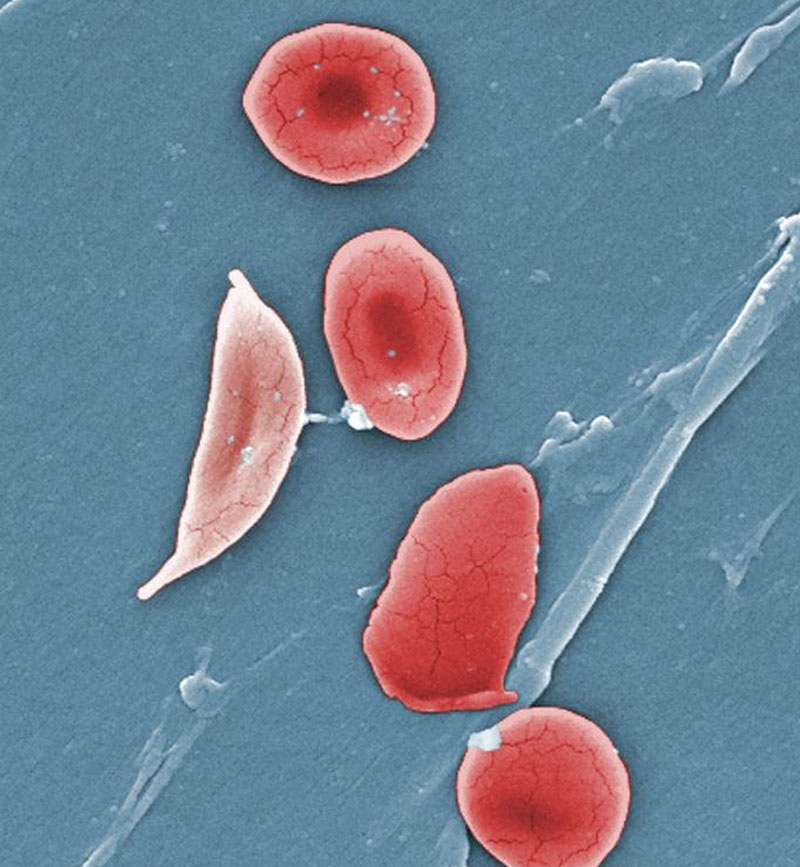Bedfordshire Police Cultural Intelligence Lead & DPA Executive Committee member Samantha Alexander writes about sickle cell disorder (SCD) – a condition affecting an estimated 7.7 million people globally – and looks at how it can be treated and accommodated in the workplace
During National Sickle Cell Awareness Month in September and all year round, hard work is being done to continuously raise the awareness of the importance of blood donation and the calls on all eligible donors to ensure the local blood supply reflects the community. Come and take a read with me as to why.
What is sickle cell disorder?
Sickle cell (also termed sickle cell anaemia) is an inherited blood disorder that causes anaemia (a reduced ability of the blood to carry oxygen) and chronic pain.

One component of the red blood cells, haemoglobin – which carries oxygen – is defective. This results in the usually doughnut-shaped cells becoming sickle-shaped. These are unable to squeeze through small blood vessels, causing blockages that deprive organs and tissues of blood.
People who inherit the disorder have two copies of the sickle cell gene, one from each parent. If both parents are carriers, having just one copy each, there is a one in four chance of the child picking up two copies of the gene. Those who carry just one copy have the sickle cell trait but may have no symptoms.
Sickle cell crisis
There are four types of sickle cell crises (Diggs, 1965). These are: vaso-occlusive, aplastic, splenic sequestration, and hyperhemolytic. The most common is the vaso-occlusive (‘painful’) crisis which people who have sickle cell may experience.
Sickle cell trait
Sickle cell trait means you carry one copy of the sickle cell gene (HbS) and one copy of the normal haemoglobin gene (HbA).
If you have the trait, it means your body produces a very small amount of sickle haemoglobin, which means that under certain circumstances, your red blood cells can ‘sickle’.
Because most of the haemoglobin in your body is normal, the majority of people with the trait do not have any symptoms at all, and might not even think to get themselves tested.
Who can be a sickle cell carrier?
Due to the movement of people across the diasporas, contrary to a known myth, anyone can be a carrier of sickle cell, but it is much more common in people from certain ethnic backgrounds. In the UK, most people who carry the sickle cell trait have an African or Caribbean family background, but it is not exclusive to this group and can occur in White British people.
Extrapolating from 16th century census data, leading geneticist Dr Steve Jones, of University College London, has calculated that one in five Britons, 11 million people, have a Black ancestor: “Increasing numbers of White babies are born each year carrying the sickle cell anaemia trait because of hidden Black ancestry…” “People who think of themselves as White but have the sickle cell trait almost certainly had a Black ancestor” he said. (Source: The Independent – ‘Hidden Black Ancestry Linked to Rise in Sickle Cell Disorder’)
What about testing?
Everyone should get tested because if you are a carrier (have the trait), your children could have sickle cell disease, should the other parent also be a carrier.
Being tested is also important if you are having surgery: there is a slightly higher rate of complications during surgery if you have the trait. However, if your anaesthetist is aware, they can make sure you have extra oxygen, which reduces the chances of complications.

Why oxygen?
Lack of oxygen is one of the known causes of complications in people with sickle cell trait. So be careful if you’re at a high altitude (e.g. at the top of a mountain, long-haul flights).
Many people with sickle cell trait can and do lead normal lives and can even excel. People with ‘trait’ are often told they cannot do sport or travel to high altitudes, but this is not true – they just need to take a little extra care.
Another common myth suggests that sickle cell trait rarely carries any symptoms. However, it is gradually seen that it can cause pain in a number of individuals. For those with a sickle cell trait, 20-40% of the haemoglobin is HbS (in comparison to 80-100% in patients with a sickle cell disorder), suggesting that some sickling and the associated joint/crisis pain can occur.
Sickle cell and the Equality Act 2010
Sickle cell symptoms like pain, fatigue, stress and depression resulting from normal activities meet the criteria for disability, and the majority of people with SCD are deemed to be disabled. Even if your condition is controlled, you may still be considered disabled in the eyes of the law.
The Access to Work and Disability Confident Employer schemes are available for employees and employers including those who live with SCD and also those who have sickle cell trait. Click on the links for more information on these schemes.
June 19th is World Sickle Cell Day, a United Nations recognised day to raise awareness of sickle cell disorder across the world, and September is Sickle Cell Awareness Month.
You can help! Read more about giving blood. ∎
This blog was originally published on the Bedfordshire Police intranet – it is reproduced here with kind permission of the author
